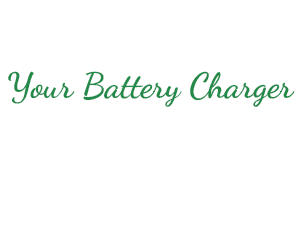While battery-powered golf cars have many advantages over gas-powered vehicles, they must be charged. To get the most value from a battery-powered golf car, you need a portable means of charging and maintaining those batteries.
That’s where solar can make a difference.
Solar panels improve electric cars by maximizing their battery lifetime, increasing driving distance, helping the environment, and saving money.
Golf Car Solar Panel Benefits:
1. Extended Battery Life
2. Increased Driving Distance
3. Reduced Charging Cost
4. Environmental Advantages
Extended Battery Life
How can golf car solar panels increase battery lifetime?
It starts with how lead-acid batteries work.
Depth of Discharge (DoD) is crucial in maintaining the health of your golf car’s or LSV’s lead-acid batteries (see the graph below).
If you consistently drive deep into your battery’s capacity, over time, you will significantly reduce the number of charge cycles and need to replace your batteries more frequently.
Solar panels feed electricity into your batteries when exposed to sunlight, lowering the DoD.
With a solar panel, you can expect your charge cycles to increase by as much as 50%.
For example, if you get 1,000 charge cycles from your batteries without a solar panel, you can now expect up to 1,500 cycles.
Las Vegas Conventions and Visitors Authority Testimonial
“We purchased and installed a single test panel on one of our golf cars on April 23, 2021, and we didn’t plug the cart into a wall charger until May 14, when the charge finally dropped to 50%. During the 3 weeks, we didn’t charge it via outlet; it was kept outdoors and usually received great sunlight. It was driven quite a bit, up and down ramps, etc., and maintained a 75% charge or higher most of that time. Based on this success, we placed an order for 14 additional units in June 2021.”
Randy Shingleton, Vice President of Facilities Las Vegas Conventions and Visitors Authority
Increased Driving Distance
A 165W panel on a typical sunny day generates enough power to increase the car’s driving range by 50%. This extra distance is due to the solar panel charging batteries, while a vehicle without solar drains batteries exclusively when driving.
A car with a solar panel provides an additional 5-10 miles over an entire workday while maintaining battery life, depending on usage.
The added driving distance equals fewer dropped rounds on the course, additional range for utility and maintenance vehicles, and extra driving for individuals in golf car-friendly communities.
Reduced Charging Costs
If you have a golf car or other LSV without a portable means of charging, you constantly take energy from your batteries without putting any charge back into your vehicle.
Solar panels generate and feed electricity into golf car batteries during daylight, saving an estimated 20 percent yearly electrical costs.
A solar panel will not replace your standard means of charging, but it will shorten conventional charging times and save you money on your electric bill.
Environmental Advantages
On average, a 165W solar panel creates enough electricity per year to offset over 250 pounds of carbon dioxide production (calculated by the US EPA website using 273kWh of power produced by the panel in one year).
Think of it this way: planting two trees today would take ten years of growth to remove that amount of CO2 from the atmosphere!
ABOUT POWERFILM:
PowerFilm is a US-based company specializing in designing, engineering, manufacturing and assembling custom solar solutions offering PowerDrive Golf Car Solar Panels specifically for the golf car and LSV markets. PowerDrive Panels are compatible with E-Z-GO TXT, E-Z-GO RXV, Club Car Precedent, and we carry a generic model to fit on various other golf car canopies. Whether you are a golf course superintendent, a golf car or LSV manufacturer, a golf car owner, a dealer, or a resident of a golf car-friendly community, we can help you drive farther and keep your batteries longer. For more information, visit www.powerfilmsolar.com.




















